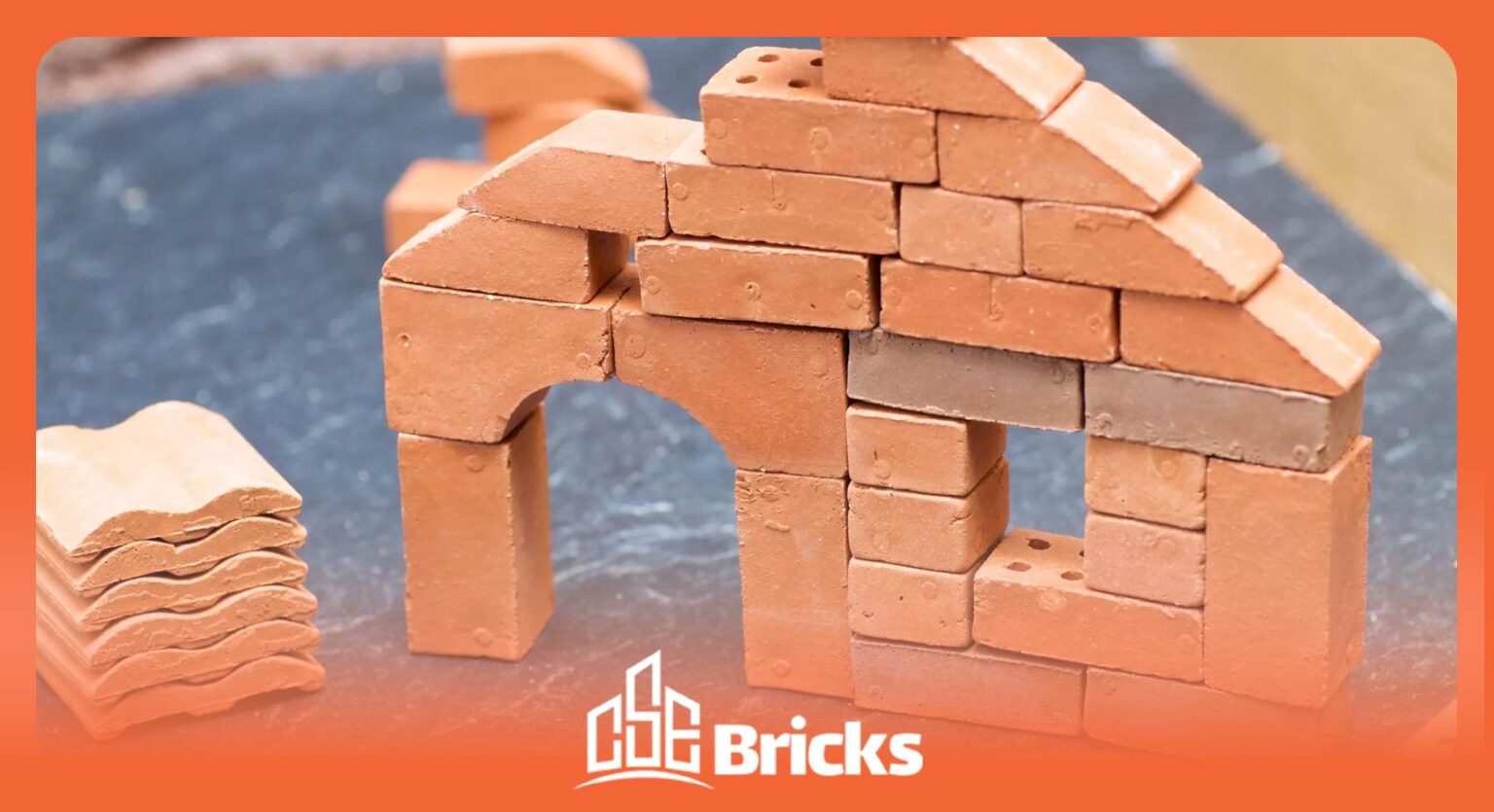Blog
Types of Interlocking Bricks and Their Materials

Types of Interlocking Bricks and Their Materials
In this article, we aim to familiarize you with the various types of interlocking bricks, which include three types: standard, refractory, and water-resistant interlocking bricks. However, to better understand interlocking bricks, we believe it is important to first review the history of interlocking bricks, their standards, and the raw materials used in their production. Stay with us.
History of Interlocking Bricks
The technique for producing interlocking bricks, known worldwide as Compressed Stabilized Earth Blocks (CSEB). (compressed earth blocks), was first invented in1952 by engineer Raúl Ramírez at the University of Bogotá in Colombia. Since then, the production of bricks using this method has become widespread globally.
Standards and Certifications of Interlocking Bricks
With the global spread of interlocking bricks in 2000, testing and standardization research for interlocking bricks began. Below, we highlight some of the most important standards for interlocking bricks:
- International Standard (ASTM-D1633) United States, 2007
- Encouraging Standard of Iran (related to production)
- Chapter 8 of the National Building Regulations, an important resource for the Engineering System Exam (ensuring safety, structural performance, durability, and appearance of the structure with adequate consideration of environmental conditions).
Raw Materials for Interlocking Bricks
In fact, interlocking bricks can be produced with various combinations of materials.
Interlocking bricks can be made from various raw materials, including different soils, perlite, lime-rich soil, sand, multiple types of granite stone, fine and coarse mineral particles, as well as fine sand.It is worth mentioning that the raw materials for interlocking bricks, due to their lack of restrictions and availability, help reduce production and transportation costs. However, considering the different types of raw materials for interlocking bricks, properties such as weight, load-bearing capacity, water absorption, and others will vary.
Optimal Formula for Raw Materials of Interlocking Bricks for Production:
- 70% soil (ordinary soil, clay, sand washing mine waste)
- 20% stone powder
- 10% cement (increase this amount if used for flooring)
- Color powder (mineral or chemical pigment)
- Water
Permissible Weight
The weight of interlocking bricks directly depends on their dimensions and the raw materials used. It is evident that the larger the dimensions of the interlocking bricks or blocks, the heavier they will be.
For example, a unit with dimensions of 12.5*25 cm, based on the raw materials of the interlocking brick, weighs approximately 3 kilograms. It is important to mention that, according to calculations, wall construction with interlocking bricks over large areas results in a lighter structure compared to wall construction with other types of bricks. For more detailed information on the comparison of the weight of interlocking brick walls versus other bricks, you can refer to the article on Interlocking Brick Calculations.
Types of Interlocking Bricks
Interlocking bricks are generally produced and offered in two types: standard and fireproof. The reception of both types by individuals involved in the construction sector has been significant. It is worth mentioning that fireproof bricks have more supporters.
Fireproof Bricks
One of the types of interlocking bricks in the world is fire-resistant, which, due to its texture and structure, not only has an attractive appearance but is also widely popular as part of the measures taken to guarantee the safety of buildings and facilities.. In fact, old bricks, due to efflorescence and low safety factors, are no longer in demand in the modern world as they once were. However, interlocking bricks, having passed essential standards, have gained a larger share of the market.
Characteristics of Fireproof Bricks
The unique feature of this type of interlocking brick is its heat insulation, which reduces energy consumption, ultimately contributing to the longevity and preservation of indoor temperatures. This makes it an economically viable option. Those who use ceramics for the exterior facades of buildings often face breakage in cold climates. However, interlocking bricks, due to their raw materials and unique structure, do not have this issue and are highly resistant to cold. Other features of fireproof bricks include their resistance to color changes and their long lifespan. Interlocking bricks are thermal and heat-insulating materials. Depending on the type of soil used in their production, the firing temperature of interlocking bricks ranges between 1050°C and 1200°C. Ensuring safety and protecting lives in hazardous situations, such as fires, is crucial. By using fireproof interlocking bricks in various construction projects, this safety measure can be achieved effectively.
The weight of a wall constructed with this type of fire-resistant interlocking brick is lower compared to other bricks, as its masonry does not require heavy mortar. Additionally, the walling process using fire-resistant interlocking bricks is easily carried out with adhesive and in a short amount of time. By applying your personal taste, you can design the decor of your building in the best and most beautiful way using fire-resistant interlocking bricks. This type of brick, due to the use of various pigment powders in its raw materials, offers a wide range of color options, including red, brown, black, and more. You can even use different types of interlocking bricks as wall plaques for interior walls and enhance the ambiance of your space with creative lighting.
Common Brick
The standard interlocking construction brick, due to its ease of use and the clean output, eliminates the need for jointing and wooden or metal molds for column construction. This has led to a reduction in the required workforce for the project. As a result, this factor reduces costs and increases the speed of construction. The green brick is environmentally friendly and, thanks to its unique composition, texture, and structure, it is capable of executing any design. Among the beneficial properties of interlocking bricks are their high compressive strength (withstanding up to 7.6 tons of pressure and 30 megapascals of stress) against earthquakes, sunlight, and other environmental factors. Additionally, these interlocking blocks, with their high safety coefficient, prevent the collapse of buildings, safeguarding the lives of individuals. Interlocking bricks, during the wall construction process, do not require the purchase of mortar for interlayer joints. In place of traditional methods, bricks are joined with adhesive, allowing the construction process to proceed more quickly. The interlocking bricks come in various sizes and attractive color options, making them an ideal and cost-effective choice for various types of wall constructions, such as warehouses, workshops, villas, pools, fireplaces, garden landscaping, and more.
Waterproof bricks
Waterproof bricks are among the popular building materials in today’s world. There are instances where buildings, despite their tasteful design, deteriorate over time and lose their initial beauty. One of the best solutions to counter this issue is to use waterproof interlocking bricks in construction, as they have a long lifespan after installation and remain beautiful and clear.
Green waterproof bricks are industrial products that are produced using advanced methods and under pressure. These bricks remain free from any contamination from the time of installation to operation, and they comply with urban construction standards. The design of this type of interlocking brick includes holes that allow for plumbing, electrical wiring, gas, and other installations without the need for wall demolition. Work can be carried out without damage or the need for re-coating. The interlocking nature of the bricks also contributes to making the structure earthquake-resistant. The steel rods placed in the hollow spaces of the walls further enhance the building’s strength.
Additionally, the material of the interlocking bricks and their hollow spaces provide up to 90% thermal insulation. Moreover, the presence of two holes between the bricks creates a double-layered structure that offers more than 60% sound insulation. It is also possible to fill the hollow spaces with materials to further improve the insulation quality. In addition to the mentioned benefits, waterproof bricks serve as a strong protective barrier for your building. These bricks, available in various sizes according to international standards, can be produced and used in all types of locations. Furthermore, due to the ease of installation and the elimination of the need for expensive and heavy mortar between the courses of the wall, they are also cost-effective from an economic perspective.
In conclusion
considering the numerous advantages of interlocking bricks, we can confidently say that producing or using interlocking bricks is highly profitable and financially viable.
Research indicates that interlocking bricks play a vital role in protecting the environment, boosting safety, enhancing the visual appeal of buildings, and lowering overall construction expenses. In fact, interlocking bricks have the potential to transform construction for the better. Therefore, do not hesitate to either produce or use these green bricks in various structures.
You can leave any questions or comments related to the production or consumption of this product in the article’s comment section. We will respond to you at the earliest opportunity.









